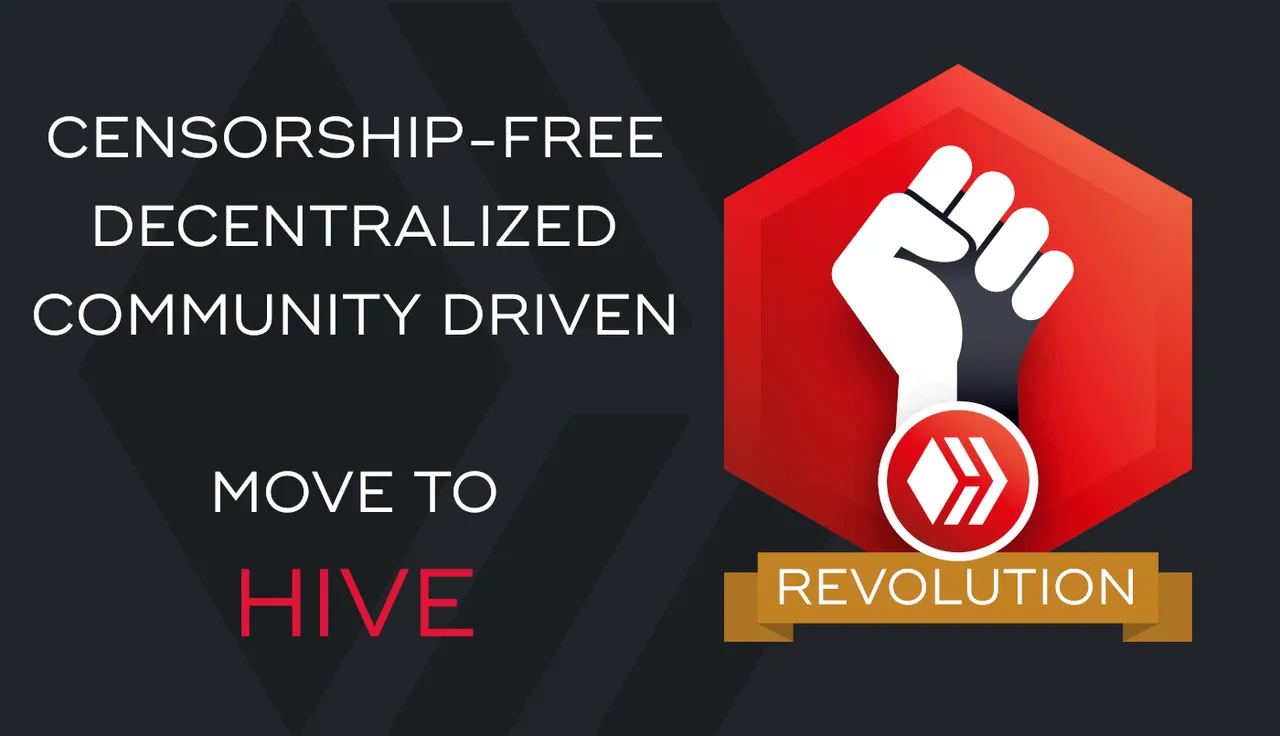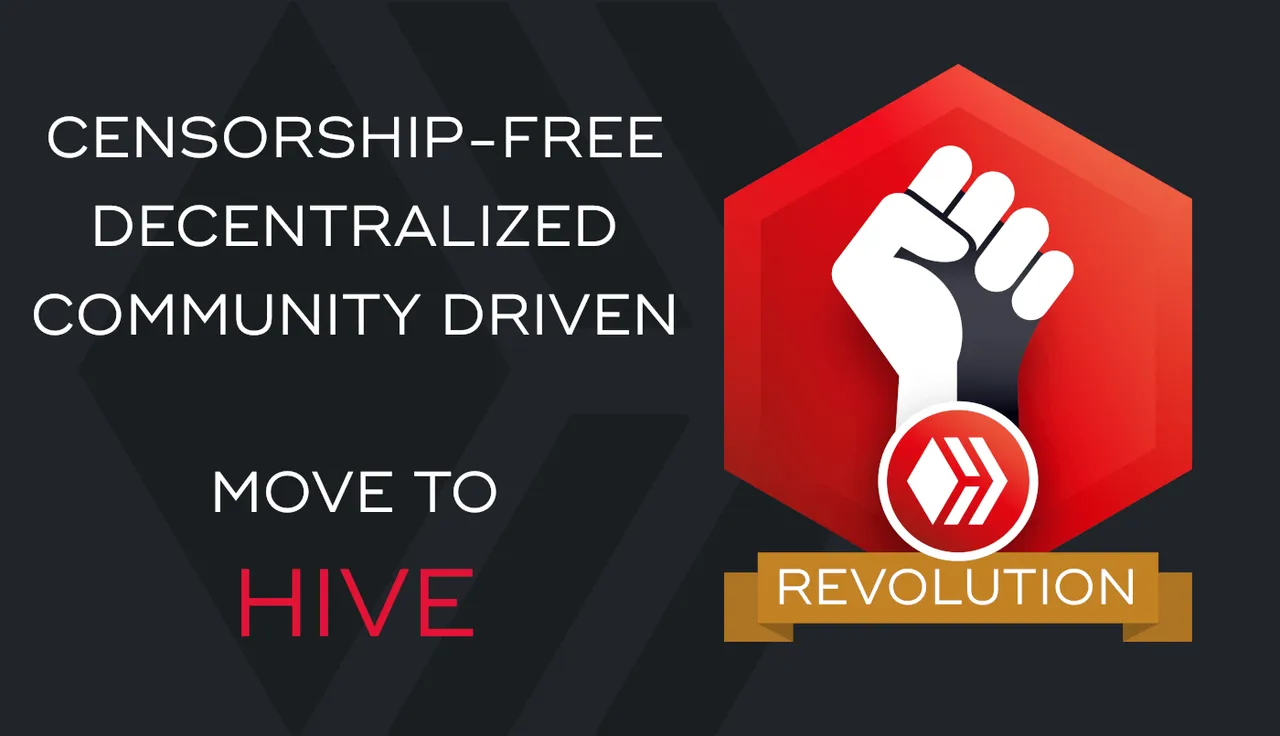Hi Everyone,

I am putting together a five part series that investigates the operation of the Steem ecosystem. I will be investigating some of the problems with the ecosystem in terms of rewards aligning with desired behaviour. The five parts to this series are as follows:
- Part 1 – Witnesses (complete)
- Part 2 – Content creators and curators
- Part 3 – Applications and services
- Part 4 – Passive income
- Part 5 – Combinations of solutions
This series of posts has been inspired by recent discussions regarding proposed solutions to some of the problems relating to the economic equilibrium in the Steem ecosystem. The views of the top ranked witnesses, in regards to proposed solutions, are briefly summarised in the post ‘Witness consensus status to fix the actual steem’s economic flows (ENG)’.

In this series, I will be investigating, identifying and articulating many of the problems with the distribution of rewards in the current Steem ecosystem.
There are several ways of earning rewards on Steem. I will simplify these into five categories. Content creation, content curation, applications and services, witnesses, and passive income. All of these categories obtain rewards from the increase in supply of Steem also known as the rewards pool.
The right incentives need to be in place for the right balance of activity. All five areas are important for different reasons. In this post, second in the series, I will be focusing on content creators and curators. I initially planned to write two separate posts for content creators and curators. As I began writing the post, I realised that it would be easier to explain the distribution of rewards by discussing content creators and curators together in the same post.
Content Creators and Curators

Witnesses receive 10% of the newly created supply of Steem and another 15% is paid out as interest on invested stake, the remaining 75% goes into the rewards pool to be redistributed to content creators, curators, and indirectly to services and applications.
Content creators are the users that create or share content such as blogs, videos, music, photographs, art, etc. Curators are the users that distribute the rewards to content creators. Rewards are distributed through upvotes and downvotes. Upvotes distribute rewards from the rewards pool to a post and downvotes return rewards from a post to the rewards pool. Part of the upvote is also distributed to the upvoter, these are called curation rewards. The rewards breakdown between content creators and curators varies depending on whether the payout is 50/50 split between Steem Blockchain Dollars (SBD) and Steem Power or 100% Steem Power. If the content creator selects 100% payout in Steem Power, the content creator will receive 75% of the post pending payout (assuming all votes are made after 15 minutes and no beneficiaries have been assigned). If the content creator selects 50% payout in Steem Power and 50% in SBD, the split between content creator and curator depends on the price of SBD. The percentage payout to content creator can be expressed as follows: (3+3X)/(5+3X), where X is the price of SBD. The higher the price of SBD, the higher the percentage payout to the content creators. The percentage payout to content creators can be expressed in Table 1.
Table 1: Percentage rewards to content creators
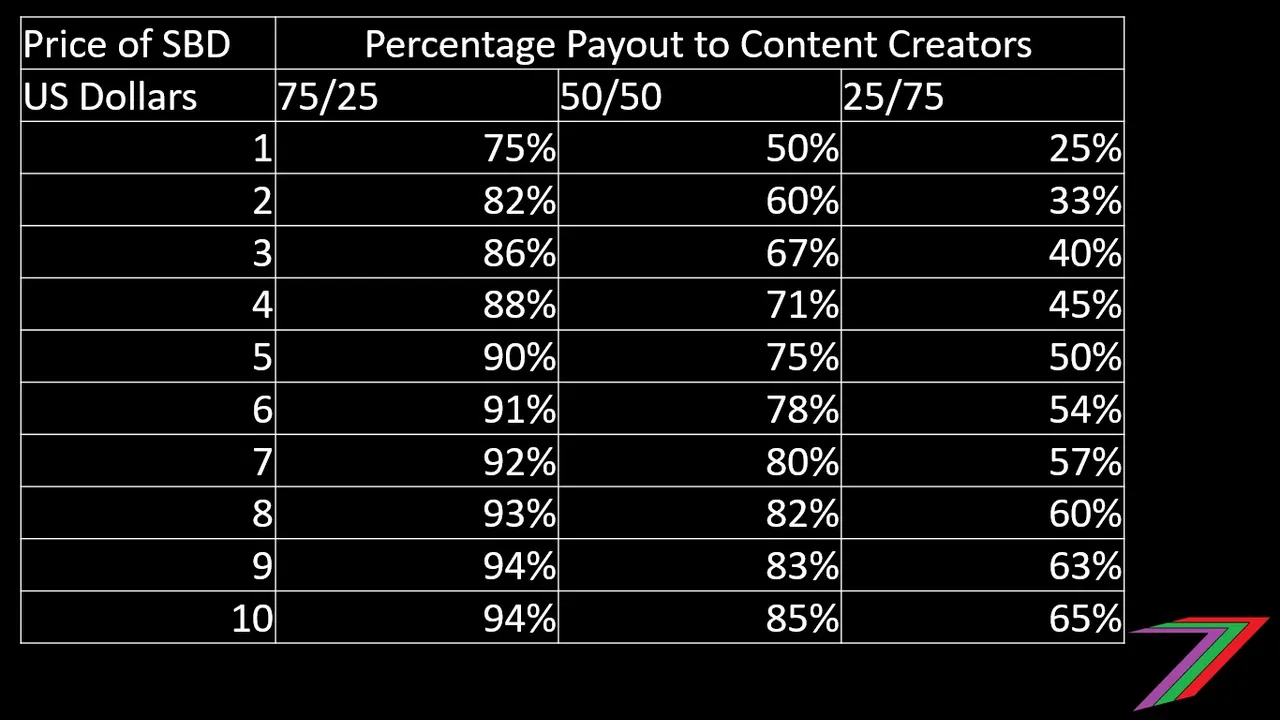
For example, if the price of SBD is US$10, the price of Steem is US$10 and post has a payout of $80. The content creator would receive approximately 30 SBD (80×0.75/2) and 3 SP (30/10). The curators, assuming everyone votes after 15 minutes, would receive 2 SP (20/10). The content creator would be rewarded approximately US$330 ($300 (30×10) from SBD and $30 (3×10) from Steem) and curators would be rewarded approximately US$20 (2×10). In this example, content creators would receive about 94% (330/(330+20) and not 75% of the rewards.
Are rewards adequately distributed to the content creators?
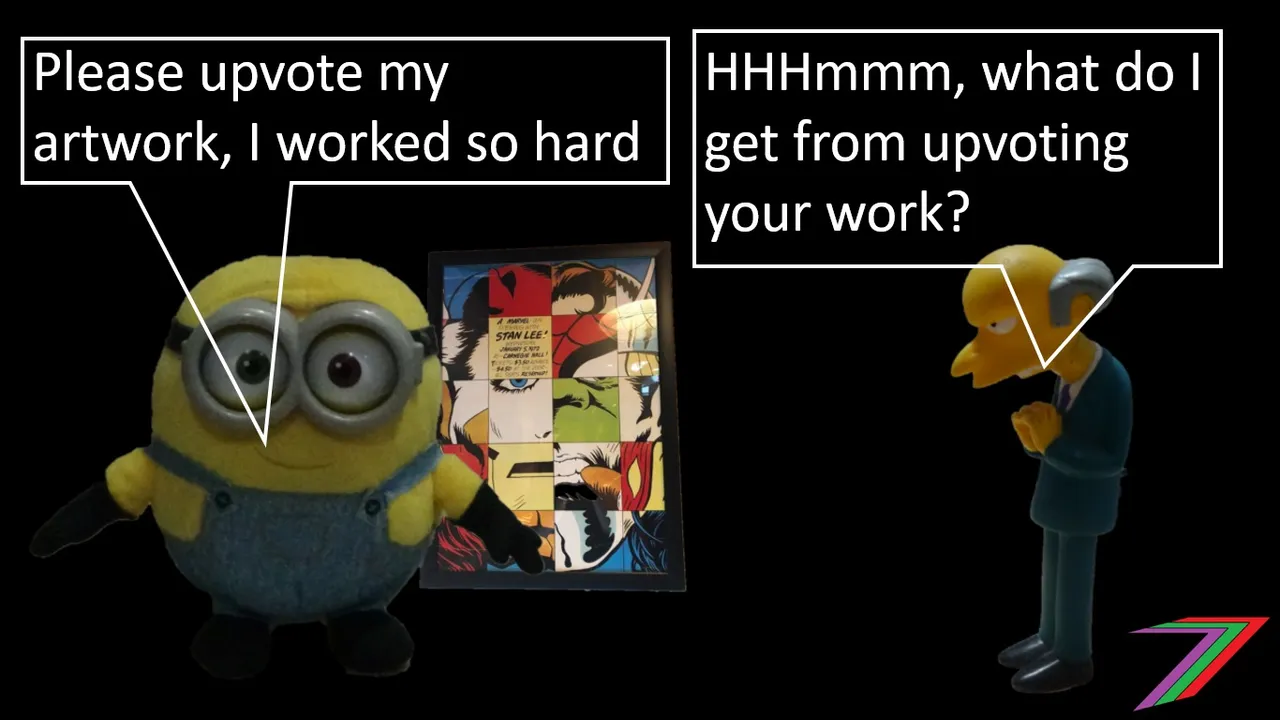
There is a 1% rule of thumb regarding internet content creation. This rule states that new content is created by approximately only 1% of the internet population. There is an alternative variation of this rule of thumb that states new content is created by 1% of the population, 9% of the population contribute to the content, and 90% just view the content (90-9-1 rule) Source (Wikipedia 2018). Does Steem follow that pattern? Figure 1 compares activity, curation, and posts. Figure 2 compares number of posts and comments.
Figure 1: Activity, curation, and posts
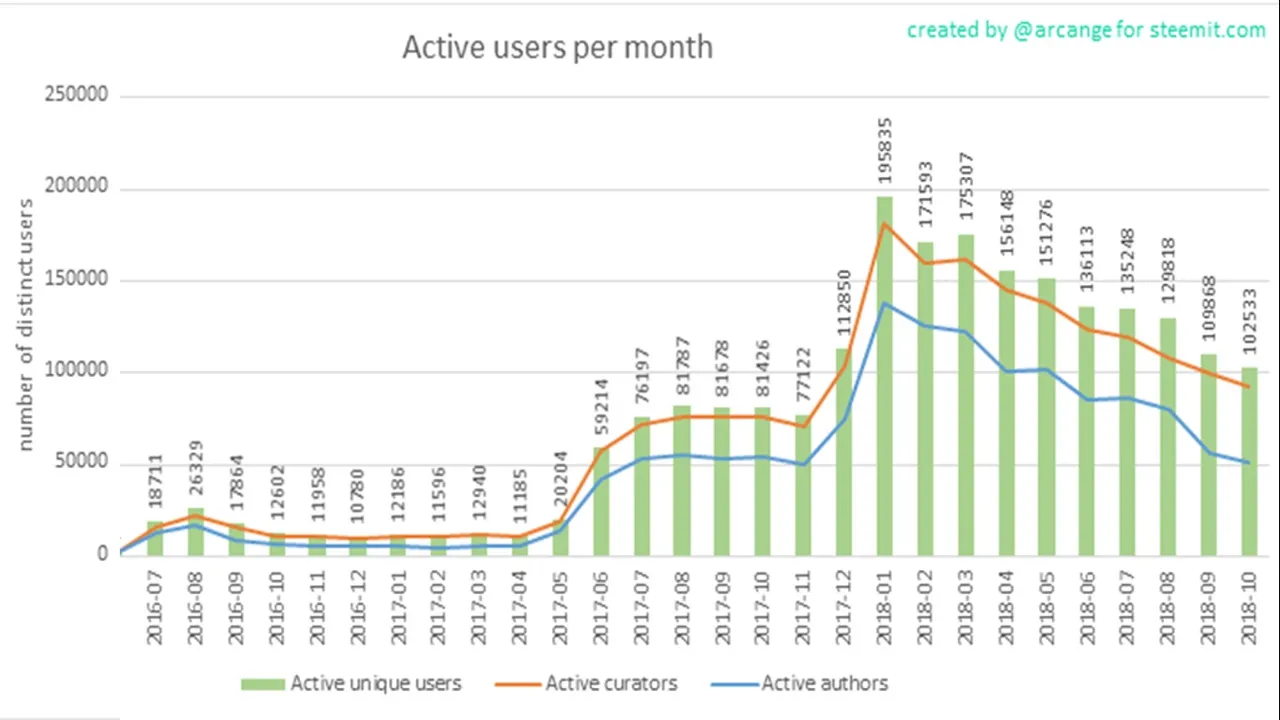
Figure 2: Posts and comments
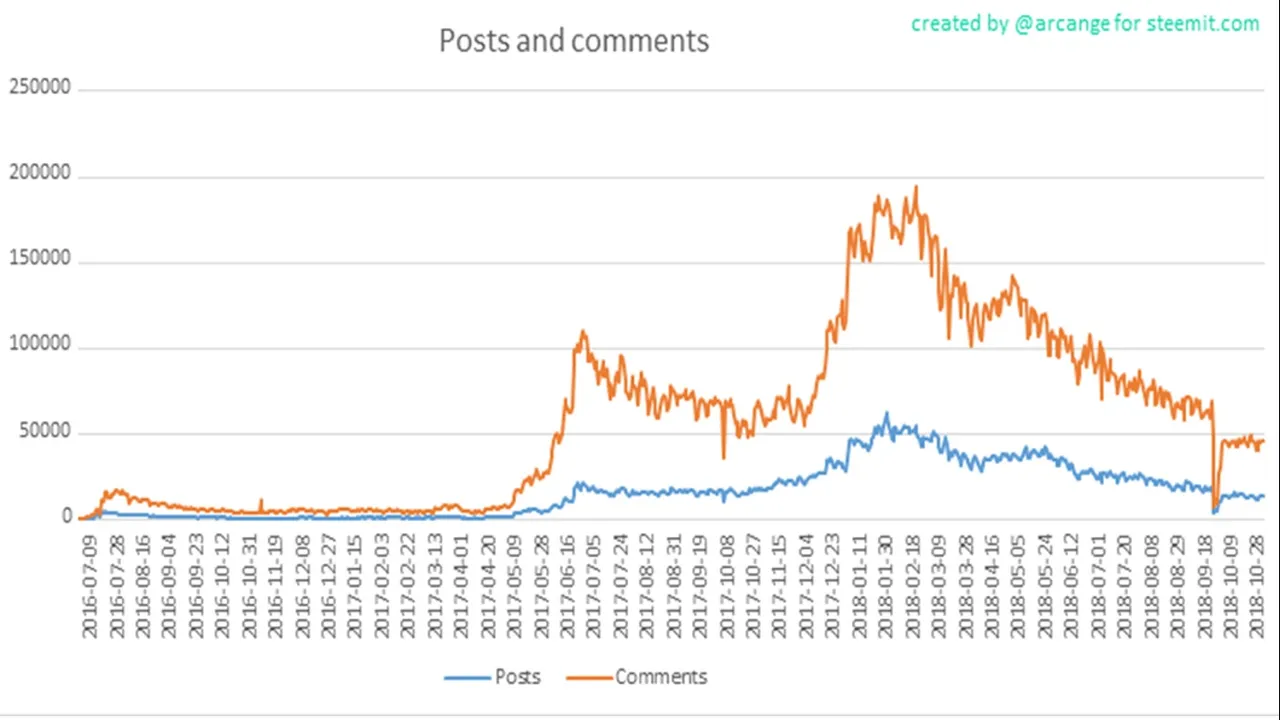
The figures above clearly demonstrate that the 1% and the 90-9-1 rules do not currently apply to Steem. There could be many reasons why this is the case. Such reasons could be as follows:
- Content creators are over-rewarded.
- Content discovery mechanisms are flawed.
- People may not like the existing user interfaces.
- Steemit marketing could be overly focused on content creators rather than attracting casual users.
- There is not sufficient reward differentiation between popular content and not popular content.
Are content creators over-rewarded?
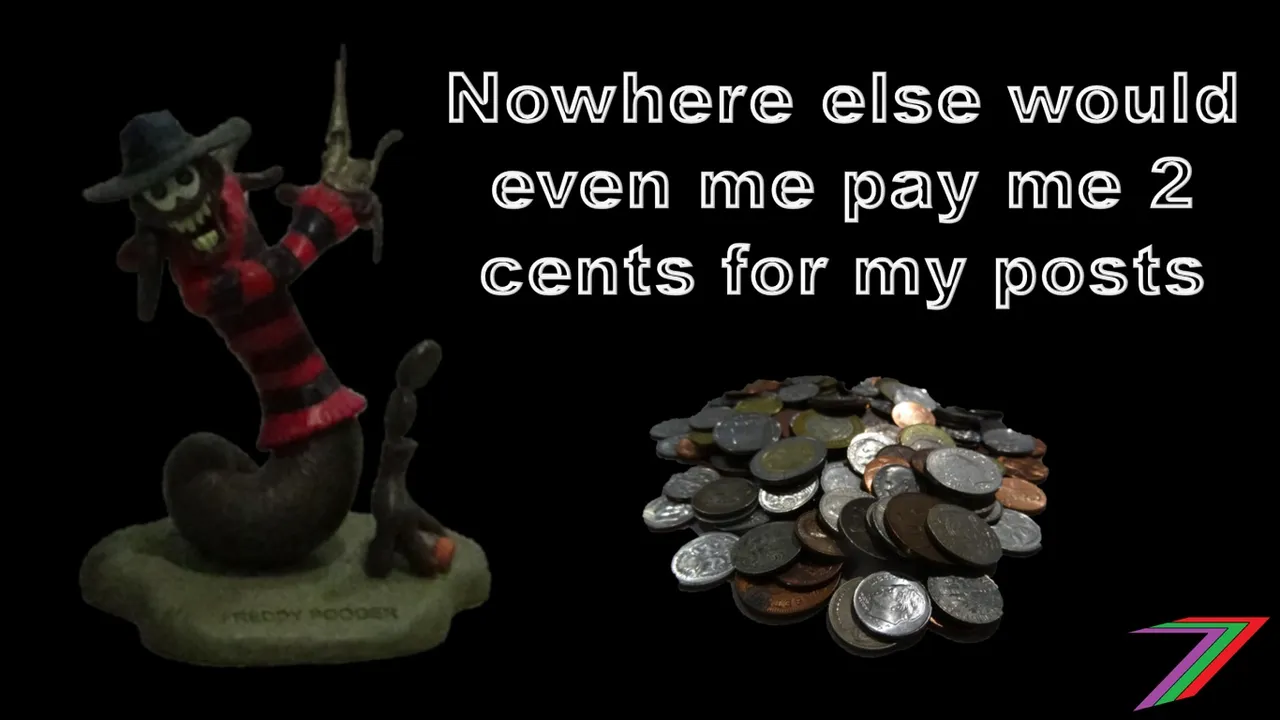
Both Figure 1 and Figure 2 indicate that the number of posts have been falling since February 2018. This implies that content creators are not over-rewarded; otherwise, the number of posts would be increasing or would have at least flatlined. The falling price of both Steem and SBD has reduced rewards for content creators that plan to earn and cash out. Content creators that intend to keep their rewards invested in Steem should not be affected by the fall in the price of Steem. However, they will lose some rewards as the price of SBD falls.
In my opinion, even though content creators get a larger proportion of the post rewards than the curators do, I do not believe content creators are over-rewarded. Many content creators pay for upvotes, this redistributes rewards to bot-owners and those delegating to the bots. Therefore, passive behaviour is more likely to be over-rewarded.
Are the content discovery mechanisms flawed?
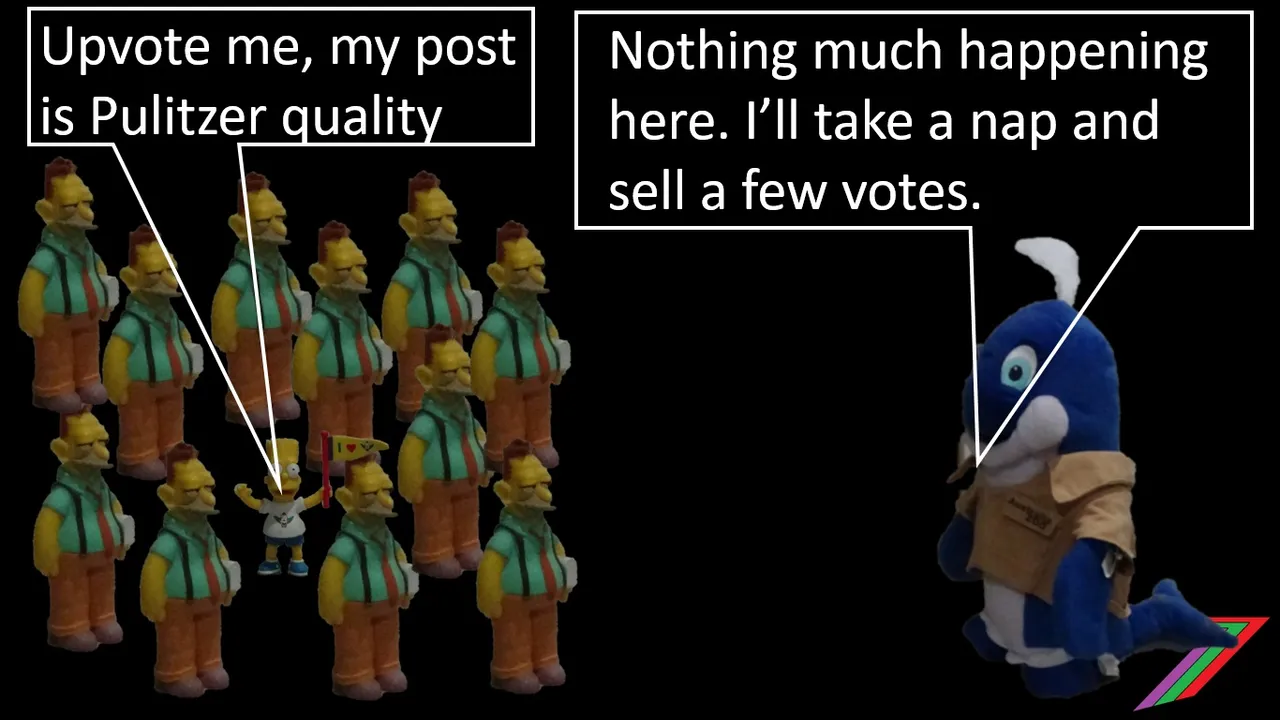
Even though Steem has far less accounts than other social media such as Facebook, Twitter, and Reddit, content can be difficult to find. There are only a few avenues to promote your content on Steem. I discuss these in depth in my post ‘Promoting Content on Steem’.
If content cannot be easily found or discovered, the most liked content may take a long time before it is appropriately rewarded; there is only a 7 day window for posts to receive upvotes. This reduces the incentive to create higher quality content. This does not reduce the incentive to create lower quality content, as this content would not be rewarded even if it were discovered, it might be downvoted instead.
Do People not like the existing user interfaces?
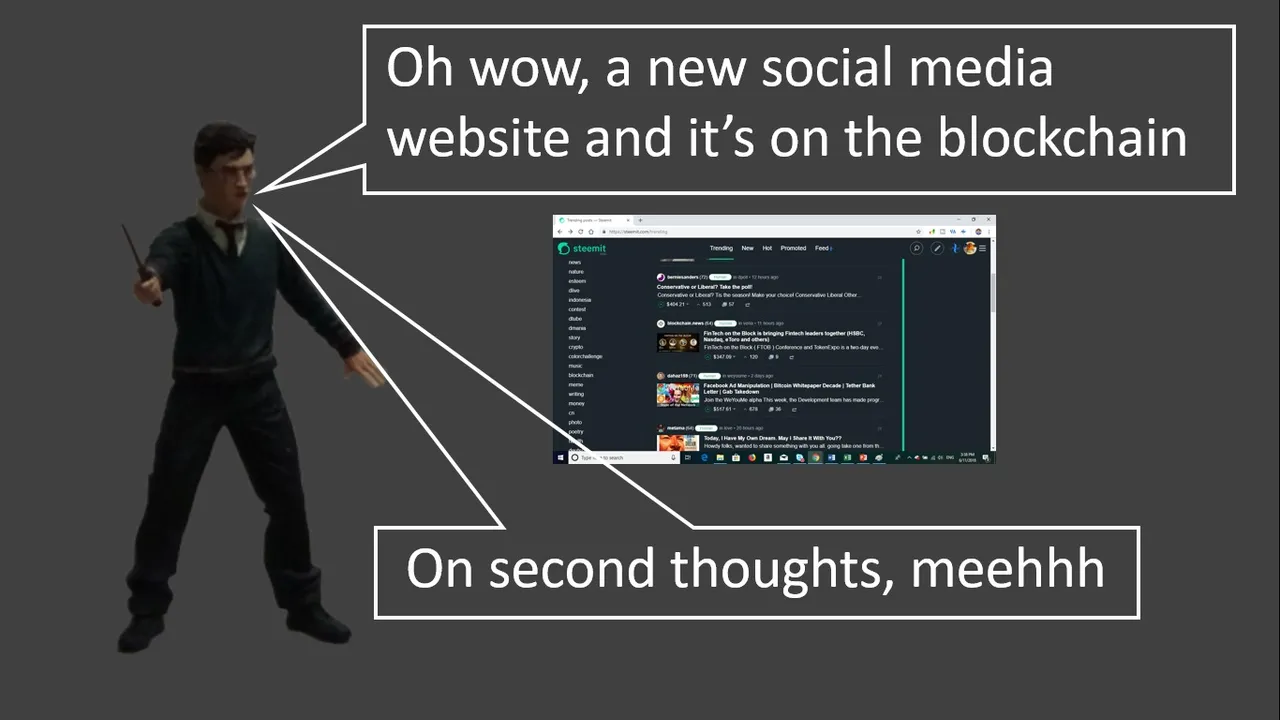
The quality of the user interface can play an important role in retaining people (content creators, curators and others). The steem user interfaces are primarily Steemit.com, Busy.org, and Steempeak.com. The quality of the Steem interfaces have improved, SteemPlus have added improvements to Steemit.com and Busy.org. Steempeak.com is a new user interface for Steem; it offers several different features as well has a different layout and presentation than Steemit.com.
The variety of interfaces as well as features has improved in 2018. Are these updated user interfaces sufficient to retain users. The user interface directly affects the viewers/curators and indirectly the content creators if the user interface does not entice viewers to stay and explore the content.
Does Steemit marketing overly focused on content creators rather than attracting casual users?

Based on my observations, much of the focus of promoting Steem has been on earning money from creating content. There are many other reasons to join Steem than to just create content. I discuss these reasons in my post ‘Steem explained by an economist’. If too much focus is placed on persuading people to join Steem to create content, there is likely to be an imbalance between the number of content creators and curators.
Is there sufficient reward differentiation between popular content and not popular content?
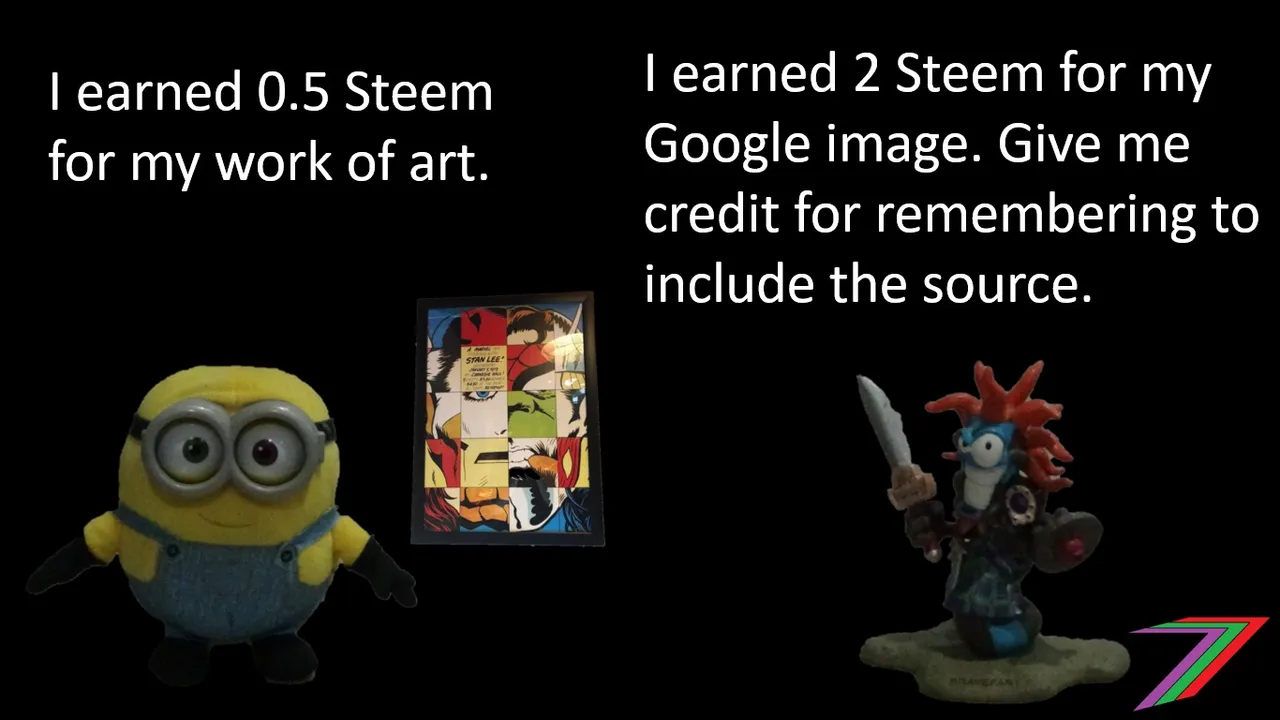
There should be a noticeable difference in rewards between popular and high quality content compared to low quality and low effort content. This difference can only be obtained if there is sufficient active curation to distinguish between what is popular and what is not. The curators just need to upvote the content that they like, market forces will determine the rest.
Defining the problem

The ratio of content creators to curators is inconsistent with most other social media platforms and the internet as a whole. Steem does not have a sufficient number of curators for the number of posts on the platform. There does not appear to be sufficient incentives for users to make the effort to look for good content to upvote. The lack of incentive to curate will result in a lack of incentive to create good content.
Possible solutions

Solutions need to focus on either increasing the number of curators or decreasing the number of content creators or both. The following solutions are discussed in this post.
- Fix problems associated with an unpegged SBD to US dollar
- Content creator and curation rewards to be split 50/50 instead of 75/25
- Content creator and curation rewards to be split 25/75 instead of 75/25
- Creation of a separate downvote mana pool
- Introduce curation beneficiaries to enable delegation of Steem Power to curators
- Further improve the Steem user interfaces
- Linear and superliner rewards
- Improve reliability of reputation scores
- Smart Media Tokens (SMTs)
- Combination of solutions
Fix problems associated with an unpegged SBD to US dollar

In my opinion, the most important areas to fix relate to the unpegged SBD to US dollar. As shown earlier in the post, the percentage distribution between content creators and curators varies depend on the price of SBD. The higher the price of SBD, the higher the percentage of rewards that go to the content creators.
There are several ways that this problem can be fixed, they include:
- Fix the SBD US dollar peg.
- Do not include SBD in post payouts.
- Include SBD in curation rewards (i.e. same proportion as content creator payout).
- Adopt same payout approach to SBD as Steem Power payouts
- Scrap SBD altogether.
Fix the SBD US dollar peg
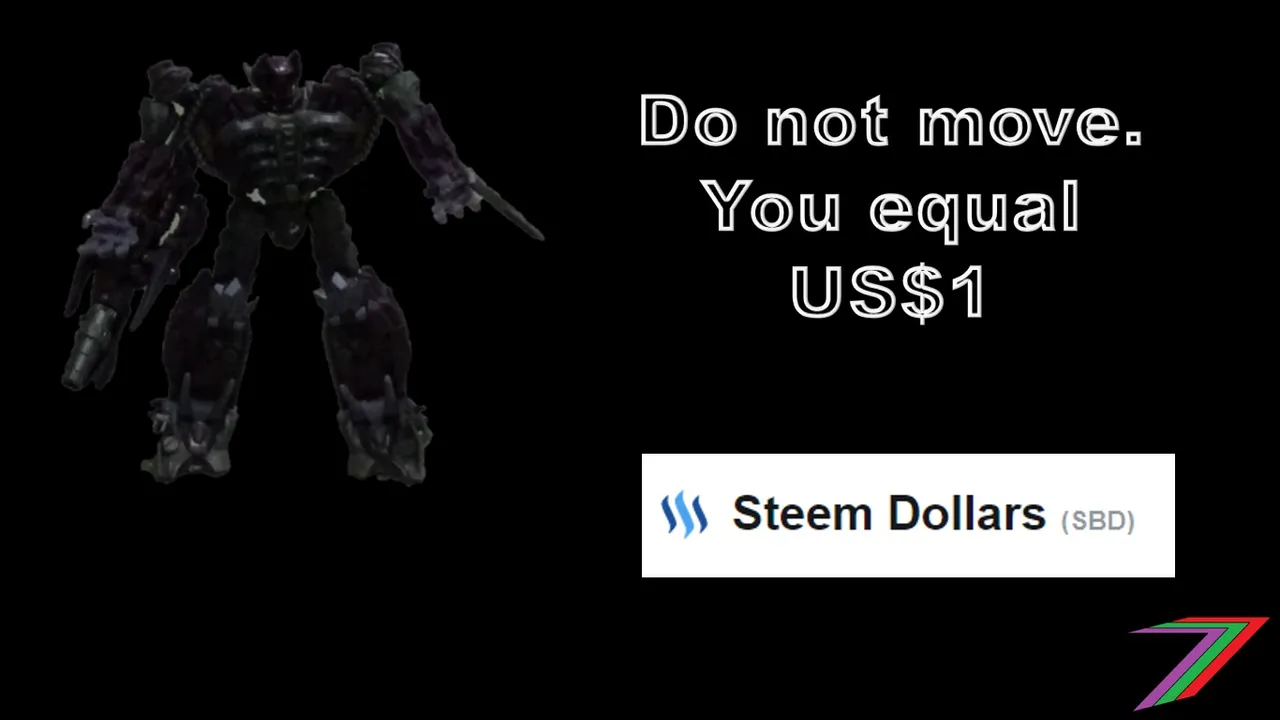
This is the most obvious option but is likely to be very difficult to implement. SBD is traded freely; this causes the price to respond to demand and supply. In theory, the supply of SBD can be sufficiently reduced to create a price floor of US$1. So far, the price of SBD has only fallen slightly before returning to approximately US$1. Creating a price ceiling for SBD is more difficult as the supply of SBD would need to increase sufficiently to bring the price down. There is a limit to the speed and quantity of SBD that can be created.
Do not include SBD in post payouts
If SBD is excluded from post payouts, content creation and curation rewards will remain in fixed proportions. This solves the problem of declining curation rewards as the price of Steem increases but creates another problem. If SBD is not distributed as a reward to content creators, the supply of SBD will not increase. Therefore, SBD will become even more difficult to peg as the price of SBD increases.
Include SBD in curation rewards (i.e. same proportion as content creator payout)
If SBD is included in both content creators and curators payouts, when rewards are set at 50/50 by the content creator, content creation and curation rewards will remain in fixed proportions. The supply of SBD will increase faster using this approach but rewards can be adjusted to include Steem to reduce the growth in supply of SBD if necessary.
Adopt the same approach to SBD as Steem Power payouts
When payouts are made to content creators, the amount of Steem Power paid is equivalent to the payout divided by 2 and then divided by the price of Steem. The amount of SBD paid is not divided by the price of SBD. If the payout is divided by the price of SBD, content creation and curation rewards will remain in fixed proportions. The price of posts would therefore be displayed in US dollars rather than SBD. This would be easier for users as well as potential investors to understand how much a post is actually earning.
Scrap SBD altogether
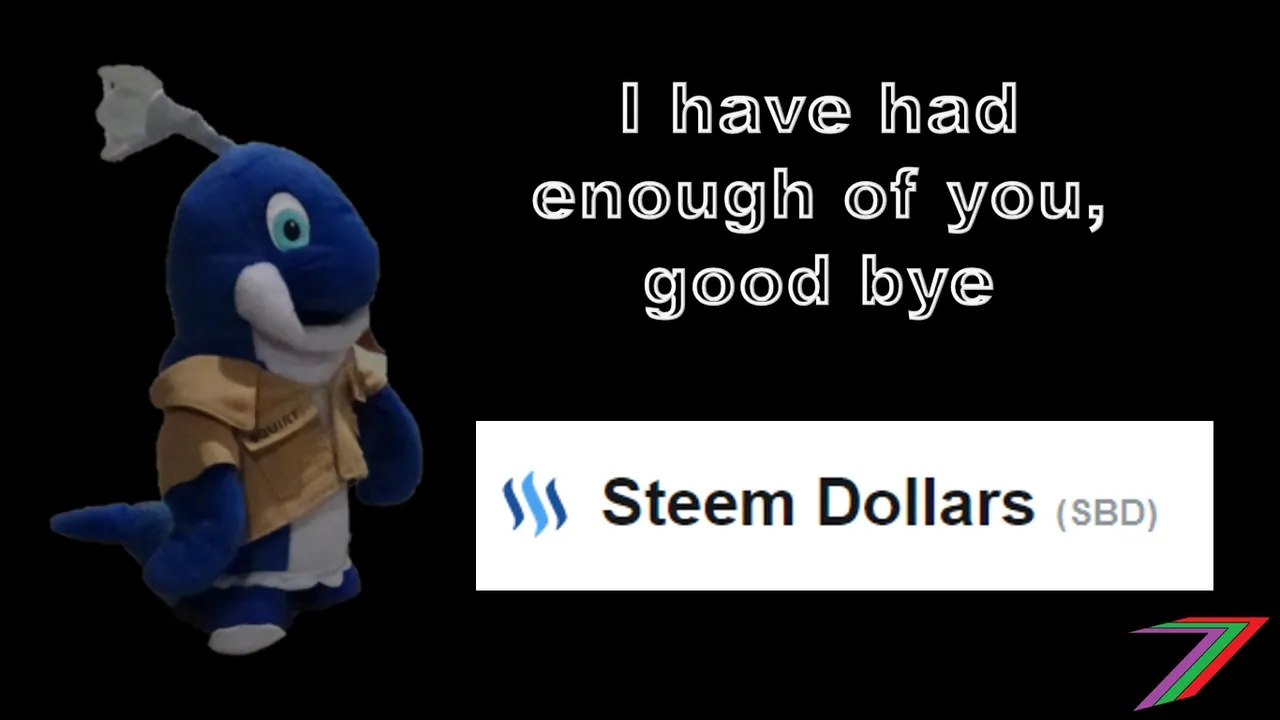
SBD could be scrapped altogether. This would solve the problem of inconsistent rewards between content creators and curators. Removing SBD would decrease stability of earning on Steem as users cannot hedge against the price fluctuations of Steem. As the price of Steem and SBD increase, the effectiveness as SBD as a hedge decreases. SBD would need to be successful pegged or at least have both a price ceiling and a price floor.
Content creator and curation rewards to be split 50/50 instead of 75/25

Splitting rewards 50/50 between content creators and curators has been proposed many times and discussed in some length. I have supported this idea as long as the problems with unpegged SBD are resolved. Table 2 contains the reward split between content creators and curators as the price of SBD increases.
Table 2: Percentage rewards to content creators (50/50 in green)
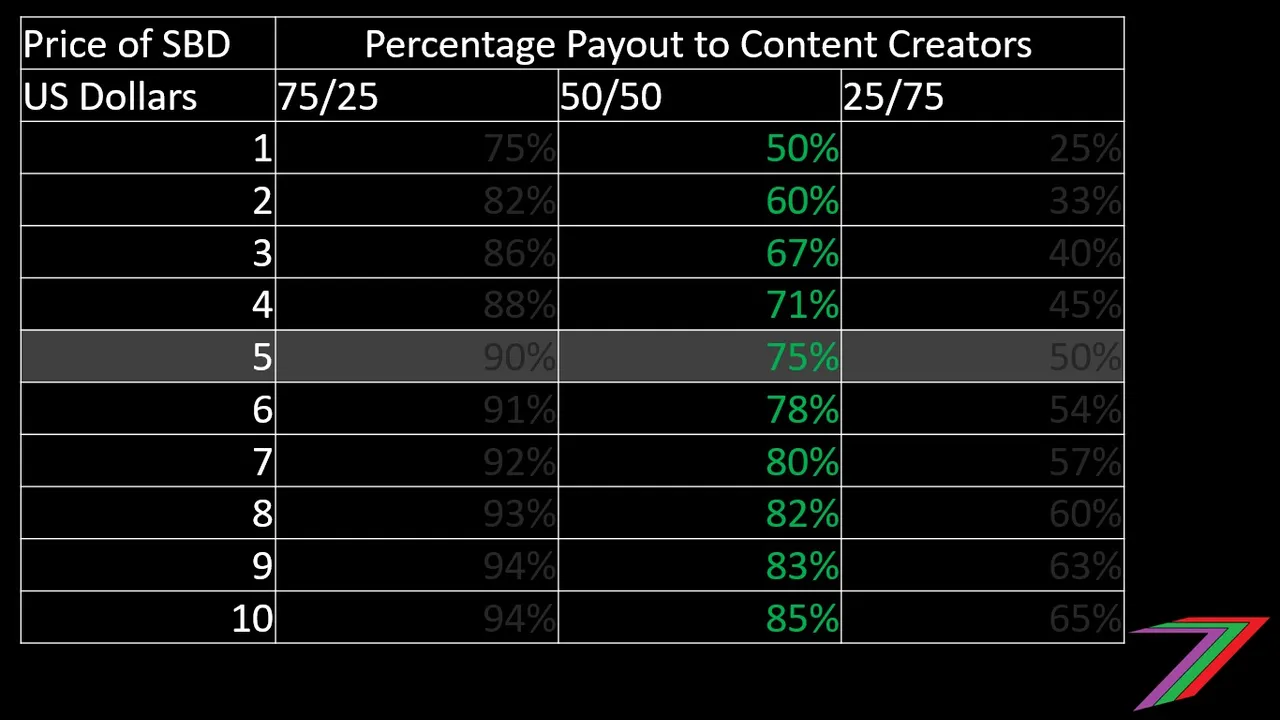
As can be seen from the Table 2, once the price of SBD reaches US$5, the split returns to 25% curators and to 75% content creators.
The key motivation for increasing curation rewards to 50% is to entice more stakeholders to curate content manually. Some of those delegating to bots are expected to undelegate Steem Power and manually curate instead. Will this actually happen? Bot owners earn the curation rewards and delegators receive the bid payments, which ranges from 60% to 75% of the upvote. If bot owners do not change their strategy, delegators will receive around 40% to 50% of the upvote. This is most likely less than the 50% they would earn from curating content. Bot owners would most likely respond by offering some of the curation rewards as payment to their delegators.
For most posts, bots receive less than 25% of their upvote in return. This is because other accounts vote before bots, thus taking a proportion of their curation rewards. This may not necessarily result in bots receiving less than 25% of the curation rewards for all posts. For some posts, bots can receive 30% or even 40% of the curation rewards. This happens because users often buy votes from many bots. The first bot to upvote the post gets a large share of the other bots curation rewards.
I conducted a rough investigation of the proportion of curation rewards that some of the bots are earning. I used steemocean.com (Date: 22/10/2018 to 27/10/2018) and the curation rewards presented in Steemit.com (Date: 05/11/2018). This analysis is very rough as the dates do not align exactly to one week prior to payout and steemocean.com presents data for 6 days and not 7. The value of upvotes is presented in SBD in steemocean.com. I divided by 0.8 to approximate the value in Steem and multiplied the answer by 7/6 to convert the value of upvotes in Steem for one week. I divided the bot curation rewards on steemit.com by the adjusted figure from steemocean.com. Table 3 contain the results for several bots.
Table 3: Approximation of Bot Curation Rewards
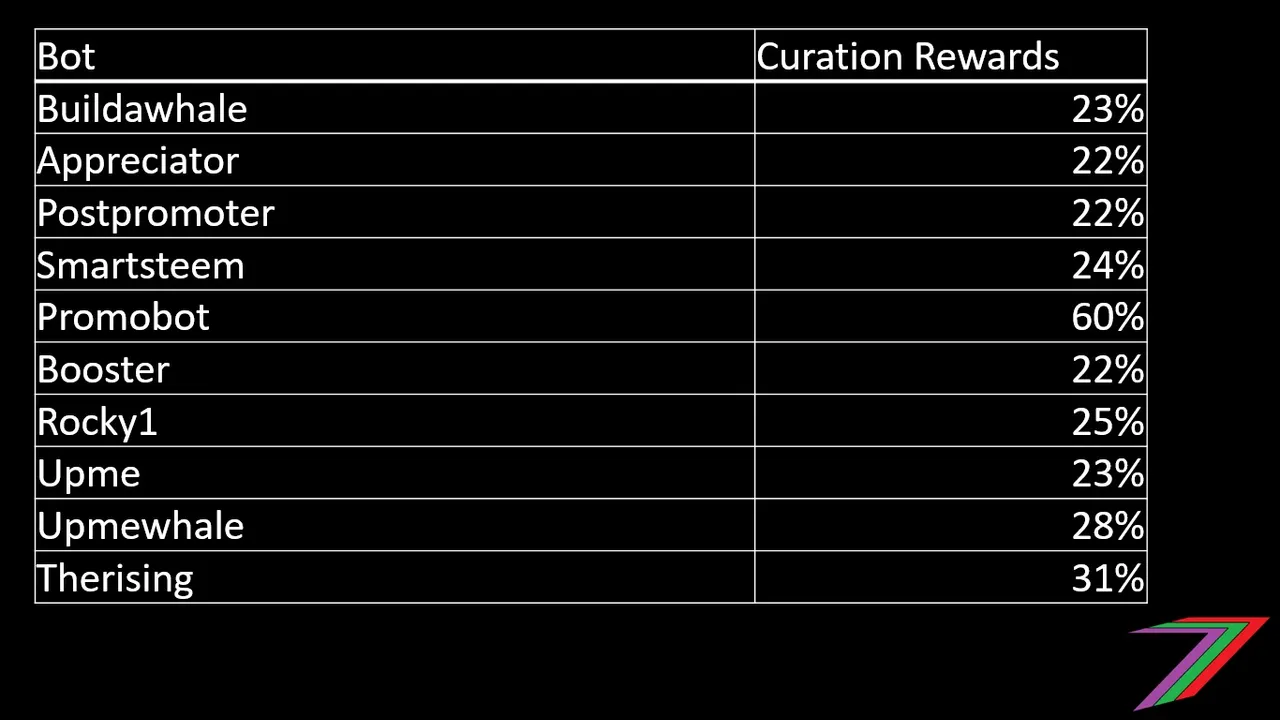
The curation rewards for bots is generally a little below 25%. Bots that run shorter upvote cycles will have a better chance of getting votes in early, hence will receive higher curation rewards.
Based on the small sample of data collected, it appears that bots should be able to obtain at least 20% of the value of their upvote at 25% curation rewards. If the curation rewards increase to 50%, let us assume that bots can now obtain 40% of the value of their upvote. Bot owners would need to offer at least 10% of the value of the upvote to delegators to exceed the reward they would obtain from curating manually. I would expect the bot owners to split the curation rewards 50/50 with delegators. Under these circumstances, the bot owners would keep 20% of the value of the upvote and delegators would get 60% to 70% of the upvote depending on the rate of return offered. The delegators would be slightly worse off than under 25% curation rewards but still would receive higher rewards than curating manually at 50%. Therefore, many accounts may choose not to remove delegation from bots.
Another problem could occur with a curation reward of 50%. The incentive to front-run (upvote before a large account such as whale or bot when upvotes can be predicted). A lag exists between making a bid and receiving an upvote. This lag enables users to upvote before a bot. Upvoting before a large vote from a bot could at least double your curation rewards. Front-running would become more profitable than delegating to bots or even selling votes. Users buying votes would benefit from the front-running and the usage of bots could increase. Increasing curation rewards to 50% by itself appears unlikely to be successful.
Content creator and curation rewards to be split 25/75 instead of 75/25

What if the curation rewards were increased to 75%. I have suggested 75%, as this approximately aligns with rewards of delegating to bots. At 75% curation rewards, bots will receive back approximately 60% (possibly less because of front-running) of the value of the upvote. Bot owners would need to give delegators at least 55% to compete with curating manually (55%+20%=75%). Earning less than 5% per upvote from operating a bot is unlikely to be more profitable than earning at least 75% per upvote from curating. I would expect most bot owners to close operations. In the absence of bots, front-running becomes more difficult as users need to predict whale upvotes instead.
I have yet to discuss self-voting. Self-voting allocates the entire value of the upvote to the content creator. If the post receives larger upvotes from bots, the rewards from self-voting could be higher than the value of the vote. If bot operations stop, self-voting will only earn rewards if the post receives high value upvotes from manual curation, auto-upvoting, and/or curation trails. Auto-voting by large accounts is unlikely to be popular because of the loss of curation rewards from potential front-running. Instead, large accounts would most likely upvote low valued good content to capture at least 75% of their upvote.
Creation of a separate downvote mana pool
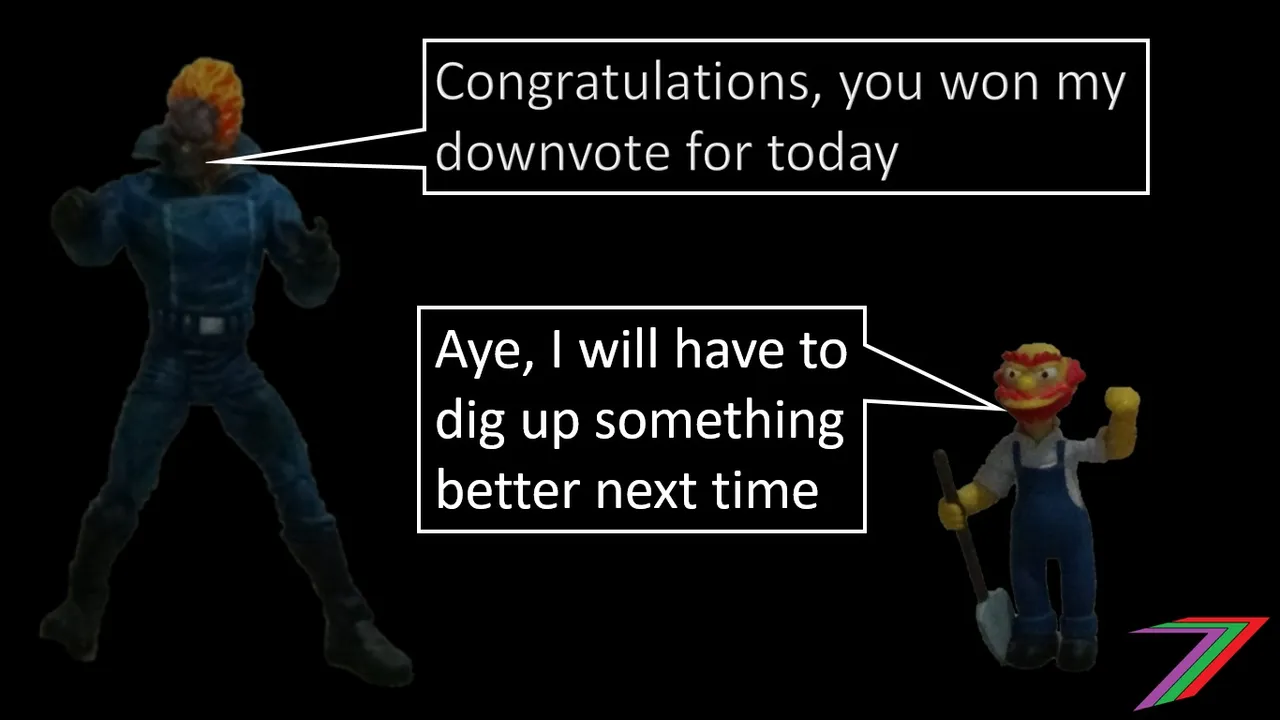
Many of the top witnesses support the creation of a separate downvote mana pool. Downvotes and upvotes currently deplete the same mana pool. Upvotes earn curation rewards whereas downvotes do not. This has made downvoting very unpopular. The cost to the downvoter is similar to the cost of the downvotee. For example, if the downvoter and downvotee have the same Steem Power. The downvotee loses approximately the value of their self-vote and the downvoter losses the value of a possible self-vote or the returns from selling that vote.
A separate downvote mana pool would enable a downvoter to downvote a post without costing potential earnings from upvotes. However, downvotes would not earn rewards, this is important to prevent people from using downvoting as a form of income. The downvote mana pool would be smaller than the upvote mana pool. If the downvote mana pool is 10% of the upvote mana pool, users will have one full downvote a day, i.e. it would take 24 hours to replenish the downvote mana pool after one full downvote.
If downvotes are not disincentivised, downvotes can be more easily used to downvote overvalued posts, excessive self-voting, and/or other undesirable behaviour. The separate downvote mana pool would be more effective if used together with a change in curation rewards as the downvotes could bring the returns from self-voting down to or below curation rewards more easily, hence more likely to change behaviour.
A possible negative outcome of a separate downvote mana pool is retaliatory downvoting. Retaliatory downvoting as with any downvoting is a cost to users in terms of forgone income from upvoting posts or vote selling. A separate downvote mana pool would mean retaliation would not come at a cost. Smaller accounts could more easily be attacked by larger accounts. Therefore, downvoting could predominantly become dominated by larger accounts. This problem could be reduced by setting up accounts that can upvote accounts attacked based on retaliation; these accounts should be able to be identified for retaliatory behaviour based on the timing of the downvotes.
If a downvote mana pool is included, it might also be worth separating downvoting from flagging. Downvoting should be based predominantly for realigning rewards, whereas flagging should only be used for cases of abuse such as plagiarism, spam, and scam posts. Downvoting could be changed to 'dislike', if that is a little less offensive terminology to the Steem population.
Introduce curation beneficiaries to enable delegation of Steem Power to curators
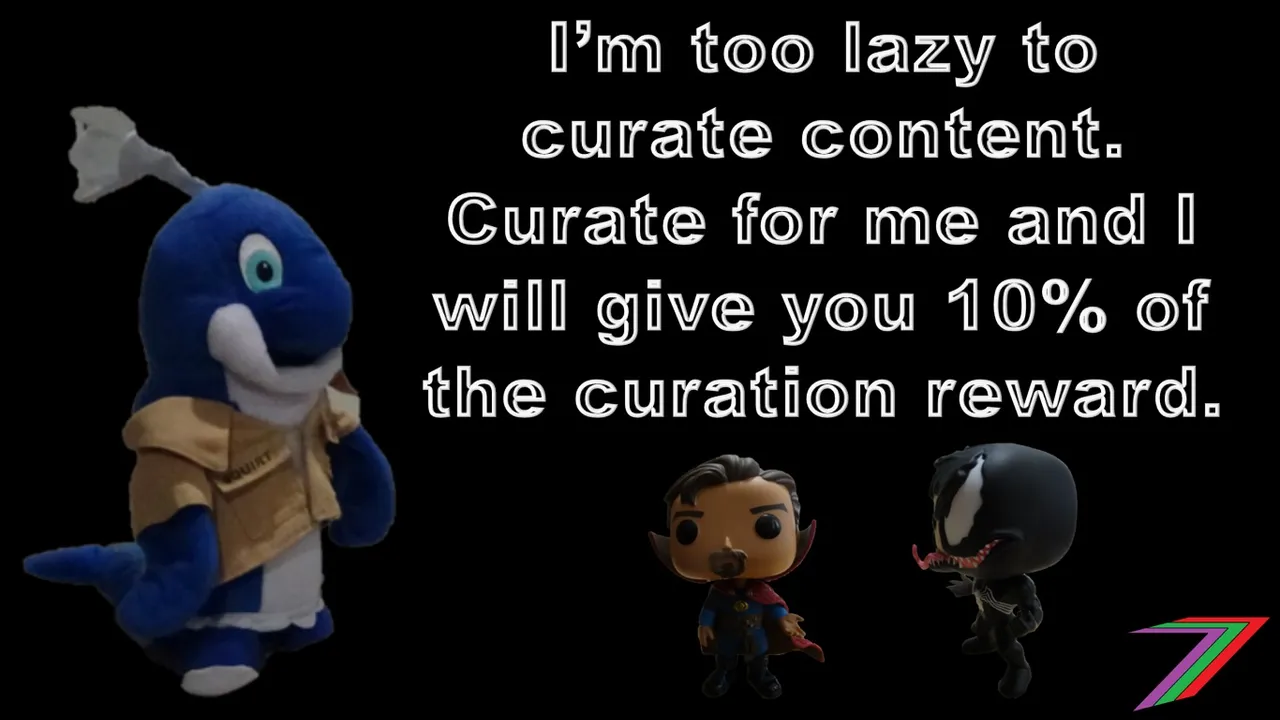
Posts have beneficiaries for content creator rewards, what if posts had beneficiaries for curation as well? This solution could only be effective if the curation rewards are sufficiently high to be redistributed. If higher curation rewards renders delegating to bots less profitable than curating manually and if an account holder with a large amount of Steem Power does not have time to curate content to earn sufficient curation rewards, they can earn from delegating Steem Power to curators.
Using the example of 75% curation rewards. A user may have 2000 of their own Steem Power, they could obtain another 18,000 in delegated Steem Power. They could arrange that the delegator obtain 90% and the delegatee keeps 10% of the curation rewards from the delegated Steem Power. As the delegatee has 2000 of their own Steem Power, the delegatee would keep 19% of the curation rewards ((2000+1800)/20,000). If the delegatee is a good curator and earns 100% curation rewards on their upvotes (i.e. is able to pick good content and upvotes early), the delegatee would keep 19% of their upvotes as curation reward. Therefore, the delegator would earn 81% of the value of the upvotes, which is equivalent to capturing 90% of their own upvote from that delegated Steem Power. Delegating to good curators would produce higher rewards than delegating to bots, if curation rewards are 75%.
Further improve the Steem user interfaces
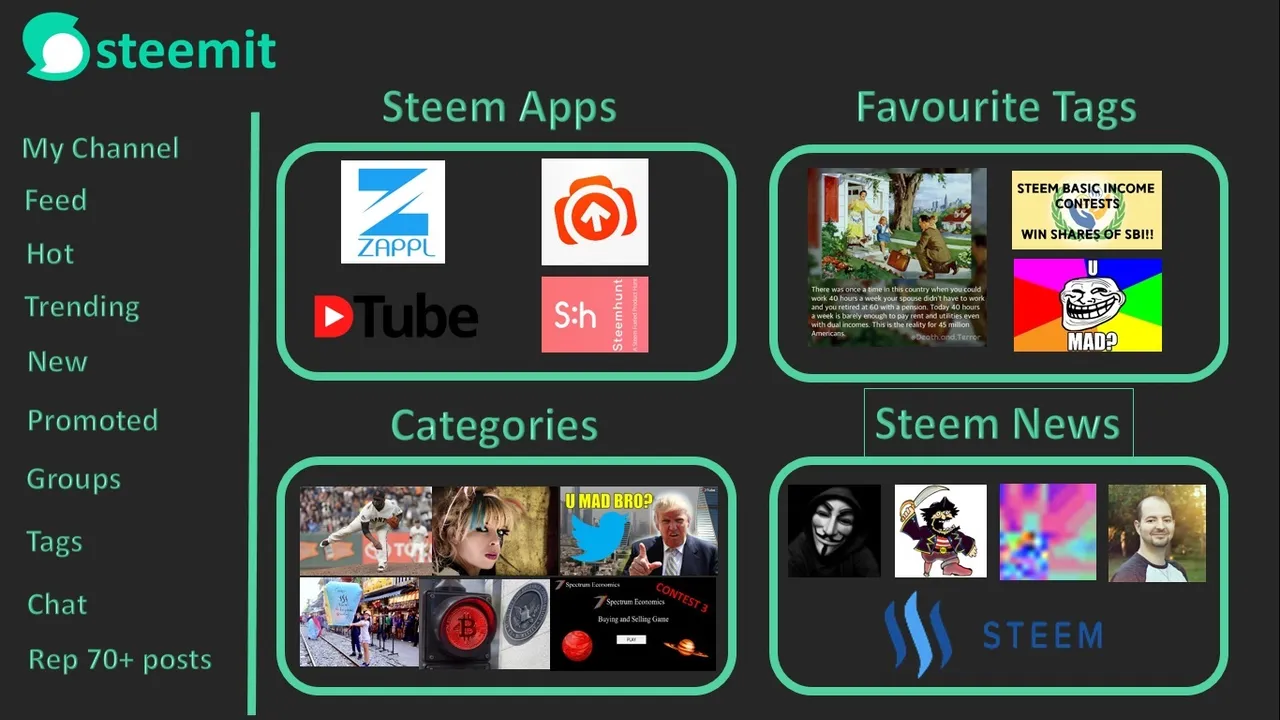
Steem user interfaces are gradually improving. SteemPlus have added features to Steemit.com and Busy.org. Steempeak.com have additional features that improves user experience. The trending page is still the front page for new users and those not logged in for all these interfaces. I have a personal preference for an interface that can help people easily get to the content they want. The trending page is just a collection of the top trending posts from all tags/categories. Most of these posts are not relevant to most users. An all tags/categories trending page should still exist but should be pushed to less prominence than the front page.
If the all tags/categorised trending page is given less prominence, there would also be less incentive for users to buy votes to get on that trending page. This would reduce demand for bot votes and could result in some accounts no longer delegating to bots, which could increase curation.
A more inviting user interface could entice more users to curate and even attract more users to create accounts so they are able to earn money while curating content. In the figure above, I provide an example of the type of alternative front page that might attract more users to engage with Steem.
A Steem interface could also include promotion of content. Many social media websites allow users to promote content at a small fee. Promotion involves paying for increased engagements and views, which should result in more upvotes.
Linear vs Superliner rewards
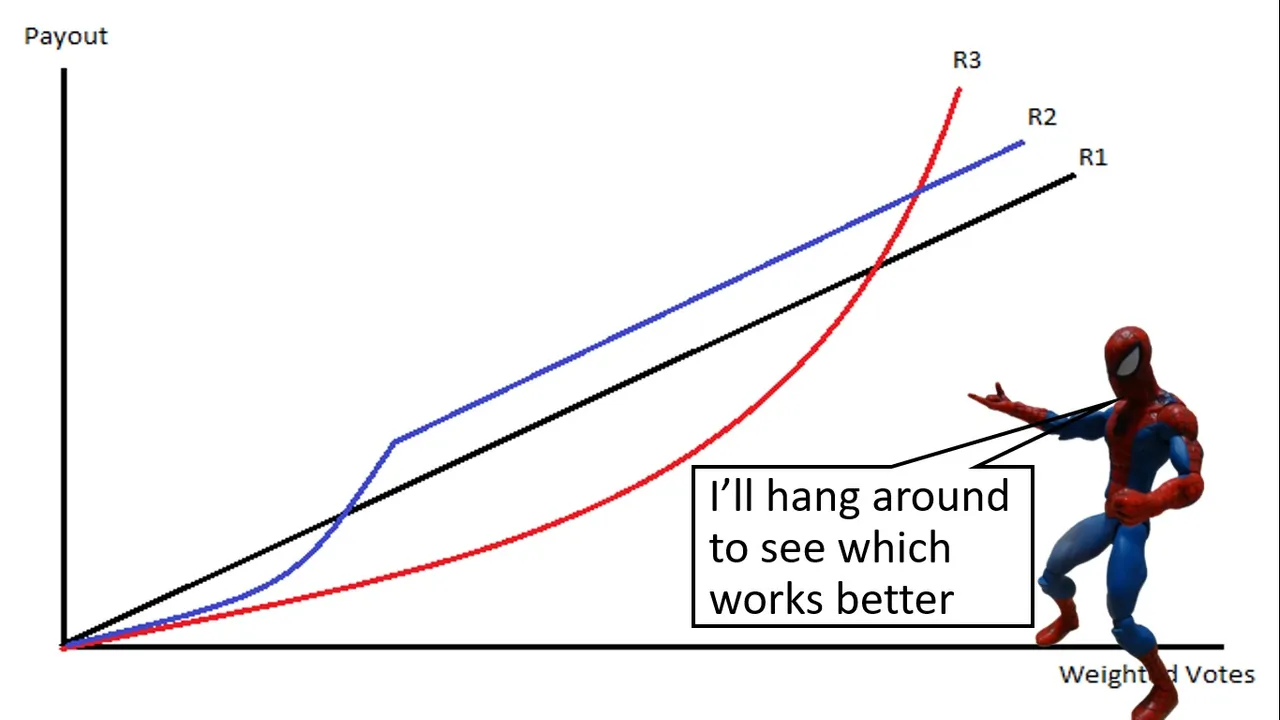
The linear and superlinear rewards debate goes back over a year. Currently, rewards to content creators is linear and rewards to curators is superlinear. Superlinear distribution of rewards to curators allocates a higher percentage reward to curators who vote early than those who vote later on highly rewarded posts. It is a method of rewarding content discovery. The existence of bots enables users to exploit this feature as high upvotes from bot can be predicted. As explained earlier in the post, this is known as front-running. The greater the extent of superlinearity, the greater the reward from front-running. The combination of higher curation rewards and superlinearity will greatly increase the rewards from front-running.
Superlinear rewards could effectively increase curation if the rewards from curation are sufficient to significantly reduce the amount of Steem Power delegated to bots. If the amount of Steem Power delegated does not or only marginally decreases. The level of active curation could be reduced even further than it is now.
Improve reliability of reputation scores

The Steem reputation scores have been completely distorted by bot upvotes. Anyone can buy votes to increase their reputation score; therefore, the reputation scores are insignificant. Unfortunately, new and potential users will not be aware of this problem. This will distort their perception of Steem and the content on the platform. Inaccurate reputation scores further hinder content discovery.
@steem-ua are developing user authority scores, which will be more accurate than the current reputation scores. Even though the work done so far has great potential, accurate reputation scores can only be fully realised once there is sufficient curation.
Smart Media Tokens (SMTs)
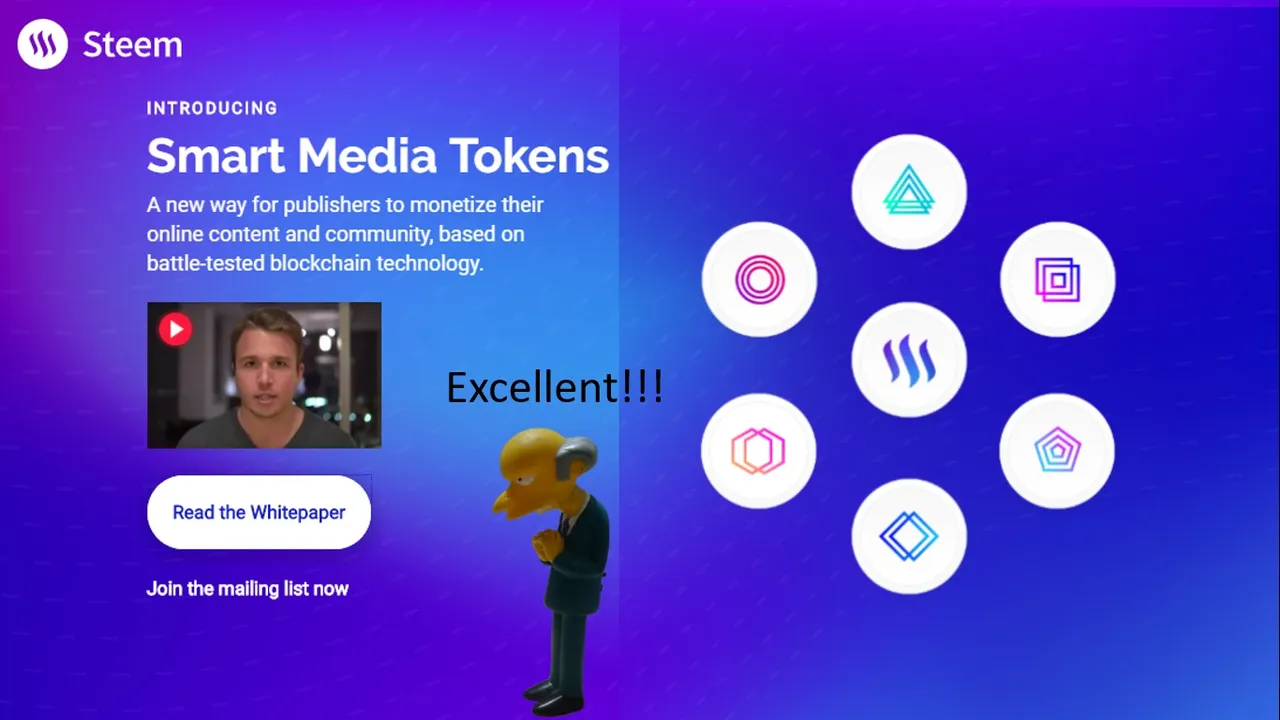
Smart Media Tokens (SMTS) have been a key focus of Steemit Inc for over a year. SMTs enable an extra layer of customisation for applications built on the Steem blockchain. Instead of relying purely on Steem for transactions, applications can have their tokens tailored for the needs of the application and the users of the application. Users of different applications have different needs, Steem may not be able to satisfaction all these needs.
Each token can have its own rewards pool as well as rules regarding distribution of tokens. Some applications might be more curator focused, some might be more content creator focused. There is even a possibility that some tokens could use account-based voting instead of stake-based voting. SMTs will also increase the level of decentralisation of the platform and reduce the onus on Steemit Inc in regards to development. SMTs can also be used as a risk mitigation strategy to trial proposed changes to Steem. For example, higher curation rewards could be implemented for an SMT. For more information on SMTs, read the ‘SMT Whitepaper’.
Combination of solutions

Solutions often work better in combination with each other. Resolving the effects of the unpegged SBD to USS1 would need to be implemented regardless of any of the other solutions suggested. There is a choice between changing curation rewards to 50% or to something even higher such as 75%. Selecting the most appropriate curation reward is a difficult decision to make. If curation rewards are too low, there is very little incentive to curate. If they are too high, there is very little incentive to create content. A shift to a higher curation reward that is not sufficient to change behaviour could produce a worse outcome for all.
In regards to closing the gap between curating and self-voting, a separate downvote mana pool complements changes to curation rewards. Including beneficiaries for curation could enable delegation to curators, which could provide an alternative to large investors that do not have the time to curate content; this alternative could be more profitable than delegating to bots or auto-upvoting. This approach would complement a higher curation reward such as 75%. If upvoting is no longer predictable, superlinear rewards could provide increased incentive to curate. For example, if there are no bid-bots and if large stakeholders rarely decide to auto-upvote posts.
SMTs could also incorporate some of the above solutions for some tokens. If they work well with particular tokens, they could be adopted with more certainty to Steem.
An improved user interface can also be applied to any of the other mentioned solutions. The user interface does not relate to Steem itself but how the information on the blockchain is presented to users. Anyone with the budget and required skills could build an alternative interface for Steem.
Conclusion

This post has defined what I consider the most pressing problems in relation to rewards distribution to content creators and curators. Several possible solutions have been described and critiqued. Some of these solutions have been discussed in detail in other posts.
Steem does not align very closely to the 1% rule of thumb. Instead, the number of posts to active users ratio indicates that more than half of active users are creating content. There are several possible reasons for this phenomenon. Most reasons link back to incentives and perceptions. This post does not draw the conclusion that any or any combination of proposed solutions will resolve the problems. However, logic indicates that implementation of most of these solutions will likely create some changes in behaviour.
Beyond just solving the problems highlighted in this post, behaviour needs to be considered in the context of what will ultimately provide the most growth for the platform. A higher price of Steem benefits all the groups discussed in this series. I believe advertising will eventually provide the greatest growth for the platform. Advertisers will be attracted to the platform based on the number of views that their advertisements can attract. These advertisements will most likely appear in posts of the most popular content creators.
Thank you for taking the time to read this long post. I still have three more posts in this series. These posts will be shorter.
Appendix
Mathematical proof, curation rewards =25%
25%/Price of Steem - SP curation
37.5% – SBD content creator (1-0.75/2)
37.5%/Price of Steem - SP content creator
Convert SBD to Steem by multiplying SBD by the price of SBD and dividing by the price of Steem
25%/Price of Steem - SP curation
37.5%(Price of SBD/Price of Steem) - SBD content creator
37.5%/Price of Steem - SP content creator
Remove price of Steem from equation by multiplying by price of Steem
25% - SP curation
37.5% × (Price of SBD) - SBD content creator
37.5% - SP content creator
Substitute into equation
Percentage curation rewards = curation rewards/(content creator rewards + curation rewards)
Curation Rewards as percentage of payout
0.25/(0.375(1+X)+0.25)
0.25/(0.625+0.375X)
1/(2.5+1.5X)
Content Creator Rewards as percentage of payout
0.375(1+X)/(0.375(1+X)+0.25)
0.375+0.375X/(0.625+0.375X)
(3+3X)/(5+3X)
Mathematical proof, curation rewards =50%
50%/Price of Steem - SP curation
25% – SBD content creator (1-0.75/2)
25%/Price of Steem - SP content creator
Convert SBD to Steem by multiplying SBD by the price of SBD and dividing by the price of Steem
50%/Price of Steem - SP curation
25%(Price of SBD/Price of Steem) - SBD content creator
25%/Price of Steem - SP content creator
Remove price of Steem from equation by multiplying by price of Steem
50% - SP curation
25% × (Price of SBD) - SBD content creator
25% - SP content creator
Substitute into equation
Percentage curation rewards = curation rewards/(content creator rewards + curation rewards)
Curation Rewards as percentage of payout
0.5/(0.25(1+X)+0.5)
0.5/(0.75+0.25X)
1/(1.5+0.5X)
Content Creator Rewards as percentage of payout
0.25(1+X)/(0.25(1+X)+0.5)
0.25+0.25X/(0.75+0.25X)
(1+X)/(3+X)
Mathematical proof, curation rewards =Z%
Curation Rewards as percentage of payout
Z/((1-Z)/2)(1+X)+Z)
2Z/(1+X+Z-ZX)
Content Creator Rewards as percentage of payout
((1-Z)/2)(1+X)/((1-Z)/2)(1+X)+Z)
(1+X-Z-ZX)/(1+X+Z-ZX)
